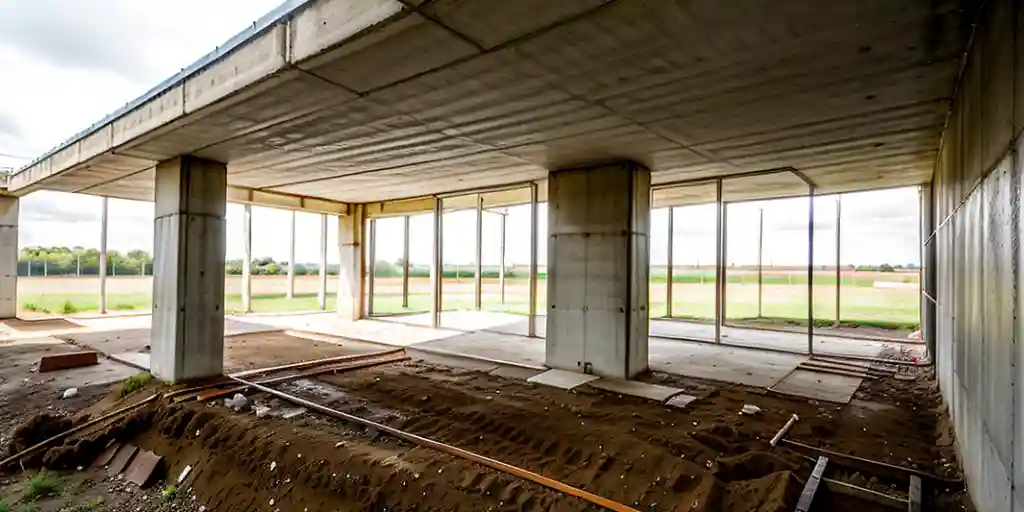
Automating Architectural Surveys with AI
In modern architecture, conducting an accurate architectural survey is crucial for understanding a site and developing designs that are both feasible and efficient. With the integration of AI, the process of conducting architectural surveys has become faster, more precise, and less labor-intensive. From using drones to capture high-definition data to transforming this information into actionable 3D models, AI is revolutionizing how surveys are conducted. This article explores how AI enhances the precision and efficiency of architectural surveys.
How Can AI Improve the Precision and Efficiency of Architectural Surveys?
AI-driven technologies significantly improve the accuracy and speed of architectural surveys by automating data collection, enhancing analysis, and enabling real-time decision-making.
Using Drones and 3D Scanners to Capture Precise Data in Architectural Surveys
AI-powered architectural surveys utilize drones and 3D scanners to collect data with high precision. This method provides faster and more detailed site information than traditional techniques. Key benefits include:
- Drones can capture comprehensive aerial data, providing a full view of the infrastructure and surroundings.
- 3D scanners create detailed point clouds, which can be quickly converted into 3D models using BIM software.
- The integration of AI-driven image manipulation tools allows for the precise adjustment and refinement of collected data.
These technologies reduce human error, improve data accuracy, and provide a more complete understanding of the site conditions, which are critical during the feasibility studies and preliminary design phases.

Architectural survey during construction
Rapid Transformation of Survey Data into Usable Digital Models in Architectural Surveys
AI doesn’t just automate data collection; it also transforms survey data into actionable models. Once data is captured using drones and 3D scanners, AI algorithms rapidly convert this information into digital formats that can be used for further analysis and design:
- AI-enhanced floor plan generators and digital illustration tools allow for the quick transformation of raw data into 3D models.
- These digital models are integrated into BIM management platforms, enabling architects to make real-time adjustments during the detailed design phase.
- AI-powered GIS software allows architects to overlay survey data with other geographical and urban planning information to provide a more comprehensive view of the site.
By rapidly transforming data into usable formats, AI helps architects move seamlessly from data collection to design, reducing the time needed for architectural surveys.
Predictive Analysis of Survey Data for Design in Architectural Surveys
AI plays a key role in analyzing architectural survey data to predict potential design challenges or opportunities. By applying predictive analytics to the data gathered during surveys, AI can:
- Highlight potential issues related to building supplies, infrastructure, or environmental factors, reducing risks during the tender phase and construction phase.
- Use building analytics to forecast the future performance of the building, helping architects make informed decisions about building management and building maintenance.
- Simulate different design scenarios using modeling software and rendering software, providing real-time insights into how design choices will interact with the existing site conditions.
This predictive analysis helps architects and project managers make smarter decisions, ensuring that potential problems are identified and mitigated early on in the design process.
FAQ: 5 Questions About Architectural Surveys
How do drones improve architectural surveys?
Drones capture high-resolution data quickly and efficiently. With AI integration, drones can automate large-scale architectural surveys, providing detailed views of the infrastructure and surrounding environment that are essential for accurate 3D models and designs.
How is AI used to create 3D models from survey data?
AI automates the process of converting survey data, such as point clouds from 3D scanners, into digital formats like 3D models. These models can then be integrated with BIM software and used for further analysis and design.
Can AI help predict future issues from survey data?
Yes, AI uses predictive analytics to analyze architectural survey data, highlighting potential issues such as material shortages, environmental risks, or building supplies challenges. This helps reduce risks during the construction project management phase.
How does AI automation reduce the time required for architectural surveys?
AI-driven tools, such as drones, 3D scanners, and floor plan generators, automate data collection and transformation. This reduces the time spent on manual data collection and speeds up the process of creating actionable 3D models and designs.
What role does AI play in post-survey building management?
After the survey phase, AI helps with ongoing building management by integrating the collected data into BIM management platforms. This allows facility managers to monitor the building’s condition and plan for building maintenance and future upgrades.




